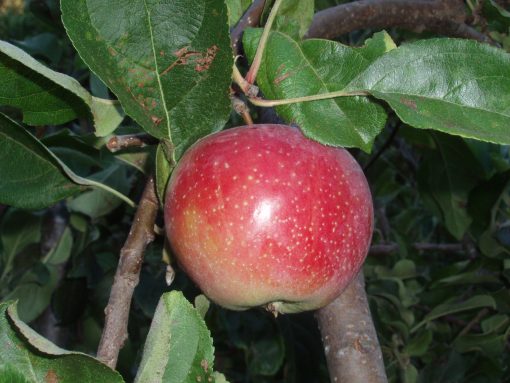
A recent article in the New York Times caught my eye: Hot weather cherries, drought resistant melons and six other crops that are being developed or already in the market could change how we eat in a fast warming world. In the face of our erratic climate, floods and pests that farmers never used to worry about plant breeders are working to perfect varieties of fruit and vegetables that can thrive under these conditions. Solutions can come from research in molecular technology to mining the vast global collections of seeds that have been conserved for centuries. These new fruits and vegetables taste good, too. Here are just a few in the news.
In a warming climate, cherries are finding it harder to get enough chill hours during the winter and also handle hotter summers. Breeders have come up with the heart-shaped Cheery Cupid which handles these conditions and is also juicy and sweet. They will be available next season in North American markets.
Then there are two new melons – the Supermelon and Flavorific – with deeper root systems have been bred to handle drought my pulling more water from the soil. They can drink less. The melons are sweet, with dense flesh, and have just been made available to farmers.
If you like cauliflower there’s a new variety that won’t get sunburned in a warming climate. Now, farmers fold the leaves back over the white head or curd by hand about two weeks before harvest. It’s expensive and time consuming. Plant breeders developed the Destinica, a true white cauliflower. It’s already in supermarkets. Essentially, it doesn’t get sunburned and it’s easier on the soil because fewer workers walk the fields. The same developer has breed a white cabbage that requires less nitrogen and can thrive during prolonged dry periods.
Breeding a new apple takes time. A horticulturist at Washington State University, Kate Evans, says twenty years is typical. Cosmic Crisp, an apple developed to grow well in the heat now grows on 21 million trees in Washington State.
Another promising new apple is the Tutti, a light crisp red apple being tested throughout Europe. A New Zealand company developed it to help Spanish farmers struggling with hotter temperatures.
We all love avocados. A new, more environmentally friendly avocado has been 50 years in the making. The Luna, which is nutty, smooth and perhaps a bit sweeter than the Haas, was developed by breeders at the University of California, Riverside which houses one of the world’s largest collections of avocado genetic material. The new trees are slender, shorter and have a smaller footprint. They use less water and produce more fruit on less land. They are also easier to harvest which saves labor costs.
Enter the potato. Potatoes like a constant, moderate supply of water and prefer cool weather, but the climate is changing so fast that researchers recently warned that the potato industry is in trouble. Researchers at the University of Maine are looking to South America, where potato cultivation began around 8,000 B.C. and to heat tolerant varieties in the American South for genetic traits that can help spuds survive excessive heat and floods.
Researchers are also exploring how to battle new waves of pests and disease that come with hotter, wetter growing conditions. One strategy being studied is breeding plants with hairier leaves which make it harder to insects to move through crops.
These are just some of the vegetables and fruits in our future.
